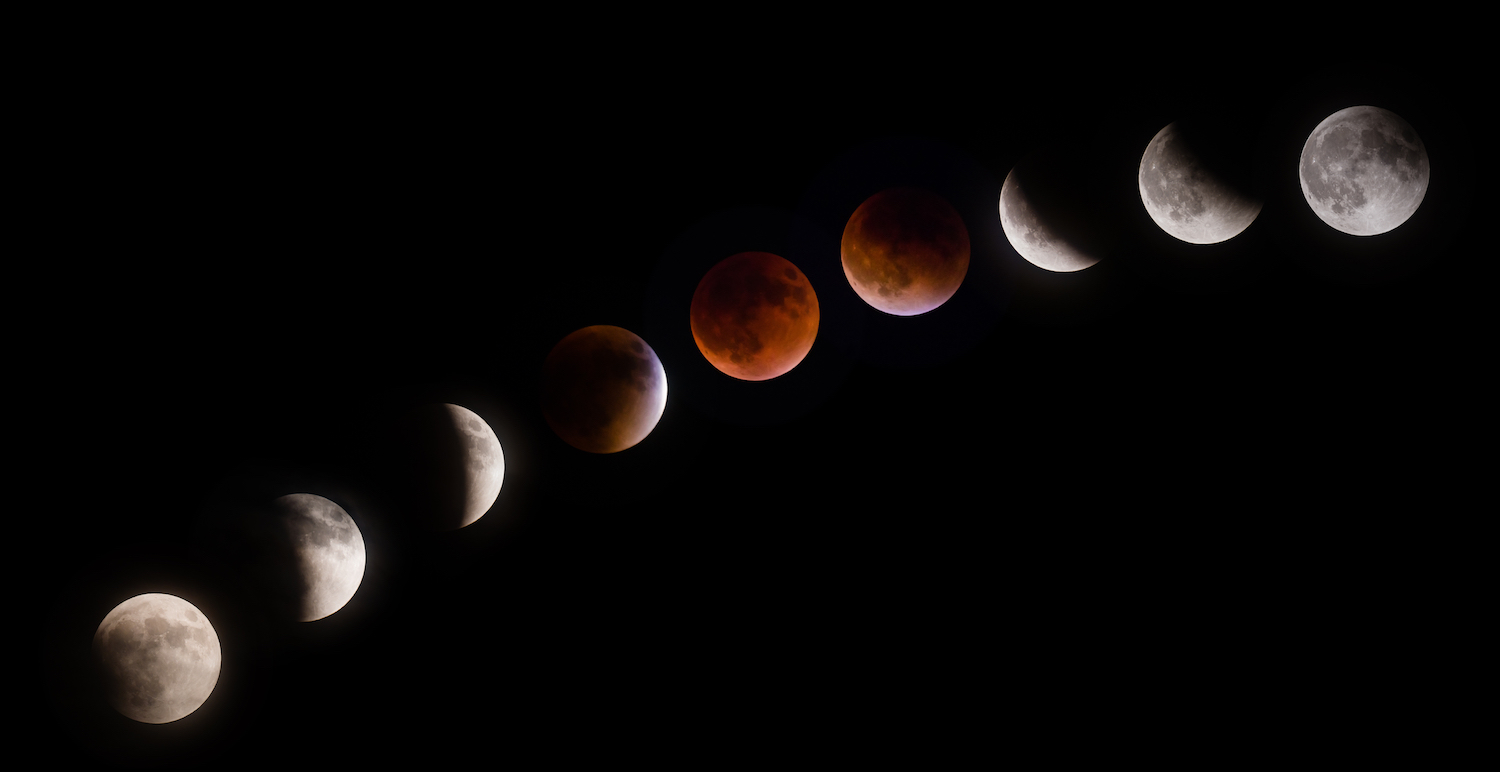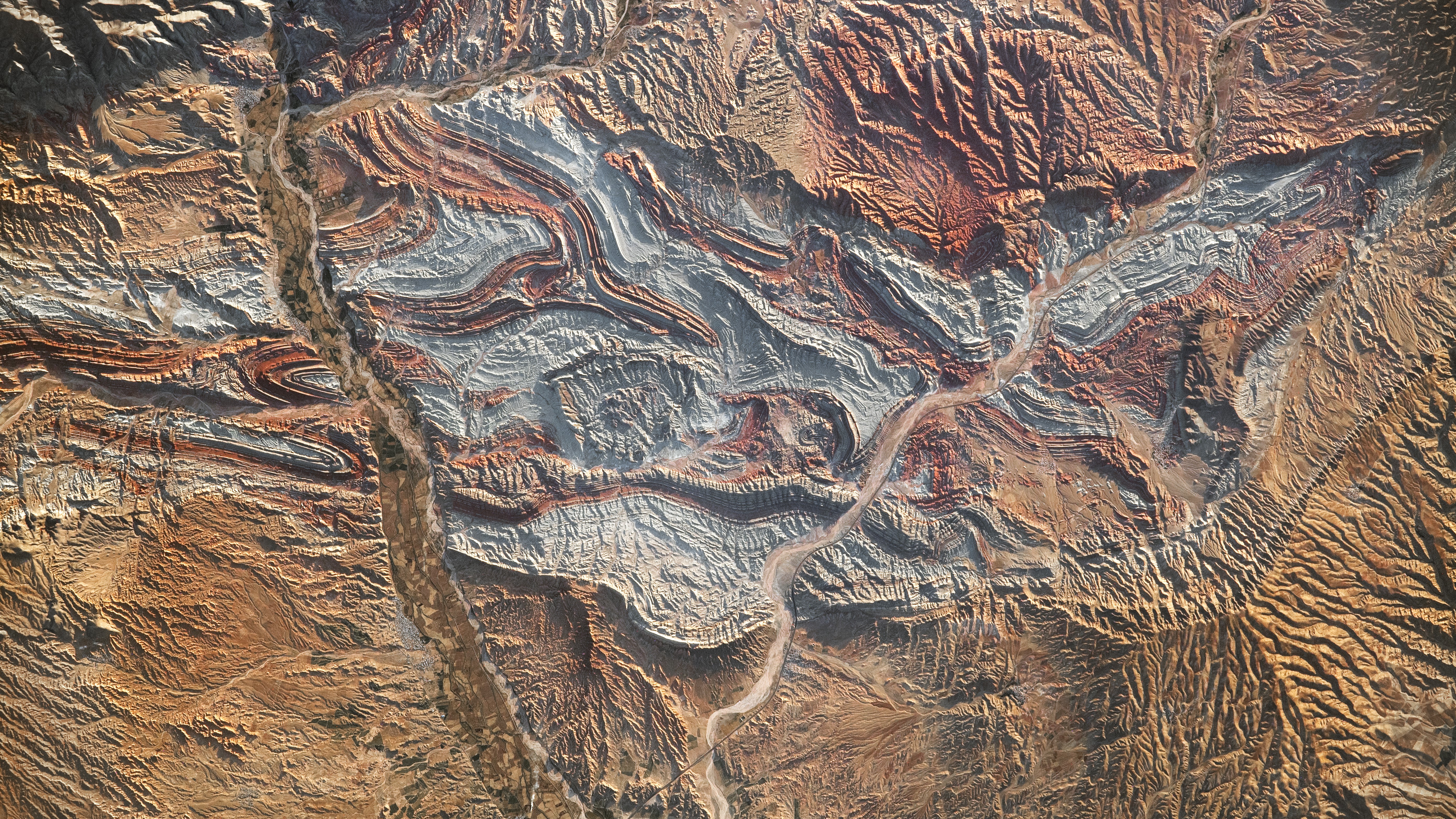What's the Science Behind This Weekend's Super Blood Moon Lunar Eclipse?
But while it's mesmerizing to watch, lunar eclipses raise all kinds of questions. For starters, why is the lunar eclipse happening now, and why does the moon turn red when our only satellite creeps into the planet’s shadow?
The science of lunar eclipses is easy to understand, once you grasp that the moon's orbit is tilted relative to Earth's orbit around the sun. In other words, the moon circles Earth every month, but because it has a tilted orbit, it rarely passes through Earth's shadow. [Photos: The Adventure Behind Eclipse Chasing]
However, about twice a year, the moon puts on a spectacular show — first, traveling directly through Earth's outer shadow, known as the penumbra. At this point, the moon will darken substantially.
"The moon will enter the Earth's shadow during the first hour, and it will look like a bite has been taken out of the full moon," Pat Hartigan, a professor of physics and astronomy at Rice University in Houston, Texas, said in a statement.

Once the moon is entirely shrouded by Earth's dark inner shadow, known as the umbra, it will look as if it's covered with a dull red filter. That’s why it's called a "blood moon." But despite this macabre moniker, this reddish color is actually quite romantic in origin: It's the culmination of light from all of the Earth's sunrises and sunsets bending through the Earth's atmosphere and hitting the moon, Hartigan said.
In fact, it's all of these sunrises and sunsets that allow us to see the moon, even if it's just a dim red, while it's hiding in Earth's shadow.
"Instead of being bright and white, the moon will be very dim and red, ten thousand or so times dimmer than usual," Walter Freeman, an assistant teaching professor in the Physics Department at Syracuse University in New York, said in a statement.
Sign up for the Live Science daily newsletter now
Get the world’s most fascinating discoveries delivered straight to your inbox.
Then, as the moon exits the umbra, it will again appear dark (like a monster took a bite out of it) until the eclipse is over.
To see the eclipse, head outside at about 9:36 p.m. EST (6:36 p.m. PST) on Jan. 20, when the moon begins moving into Earth's penumbra. The total eclipse begins at 11:41 p.m. EST (8:41 p.m. PST), when the moon sits completely inside the umbra. The official end of the eclipse, when the moon has moved completely out of the penumbra, occurs at 2:48 a.m. EST Monday (11:48 p.m. PST Sunday). To figure out exactly what's happening when, see Live Science's full coverage on how to watch the eclipse.
You can spy on the eclipse with your bare eyes, but you might see more details on the blood-red moon if you have binoculars or a telescope, Hartigan advised.
"A lunar eclipse is a fun event the whole family can enjoy and gives a nice connection to the natural world," Hartigan said. "Sitting out in a lawn chair in the backyard is a fine way to experience it."
- Crossroads of the Solar Eclipse: Best Photos from Carbondale
- Photos: Great American Solar Eclipse
- Photos of Annular Solar Eclipse: May 20, 2012
Originally published on Live Science.

Laura is the archaeology and Life's Little Mysteries editor at Live Science. She also reports on general science, including paleontology. Her work has appeared in The New York Times, Scholastic, Popular Science and Spectrum, a site on autism research. She has won multiple awards from the Society of Professional Journalists and the Washington Newspaper Publishers Association for her reporting at a weekly newspaper near Seattle. Laura holds a bachelor's degree in English literature and psychology from Washington University in St. Louis and a master's degree in science writing from NYU.










